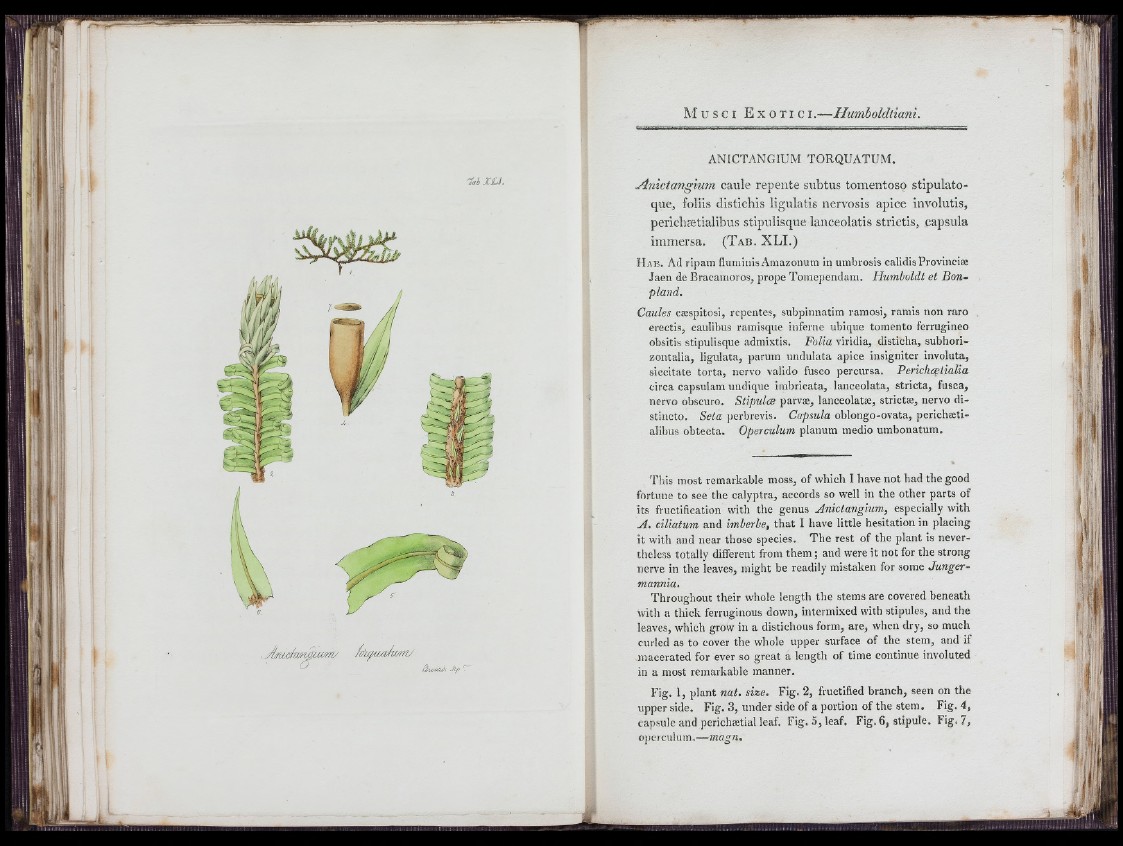
O (¿wa/rJi fr/i '■
ANICTANGIUM TORQUATUM.
Anictangium caule repente subtus tomentoso stlpulato-
que, foliis distichis lignlatis nervosis apice involutis,
periehætialibus stipulisque lanceolatis strictis, capsula
immersa. (Tab. XLI.)
H a b . Ad ripain fluminis Amazonum in umbrosis calidis Provinciæ
Jaen de Bracamoros, prope Tomependam. Humholdt et Bonpland.
Caules cæspitosi, repentes, subpinnatim ramosi, ramis non raro
erectis, caulibus ramisque inferne ubique tomento ferrugineo
obsitis stipulisque admixtis. Folia viridia, disticha, subhori-
zontalia, ligulata, parum undulata apice insigniter involuta,
siccitate torta, nervo valido fusco percursa. Perichoelialia
circa capsulam undique imbricata, lanceolata, stricta, fusca,
nervo obscuro. Stipuloe parvæ, lanceolatæ, strictæ, nervo distincto.
Seta perbrevis. Capsula oblongo-ovata, perichæti-
aübus obtecta. Operculum planum medio umbonatum.
This most remarkable moss, of which I have not had the good
fortune to see the calyptra, accords so well in the other parts of
its fructification with the genus Anictangium, especially with
A . ciliatum and imlerle, that I have little hesitation in placing
it with and near those species. The rest of the plant is nevertheless
totally different from them ; and were it not for the strong
nerve in the leaves, might be readily mistaken for some Jungermannia.
Throughout their whole length the stems are covered beneath
with a thick ferruginous down, intermixed with stipules, and the
leaves, which grow in a distichous form, are, when dry, so much
curled as to cover the whole upper surface of the stem, and if
macerated for ever so great a length of time continue involuted
in a most remarkable manner.
Fig. 1, plant nat. size. Fig. 2, fructified branch, seen on the
upper side. Fig. 3, under side of a portion of the stem, F ig .4 ,
capsule and perichætial leaf. Fig. 5, leaf. Fig, 6, stipule. Fig. 7,
operculum.—magn.
/I J